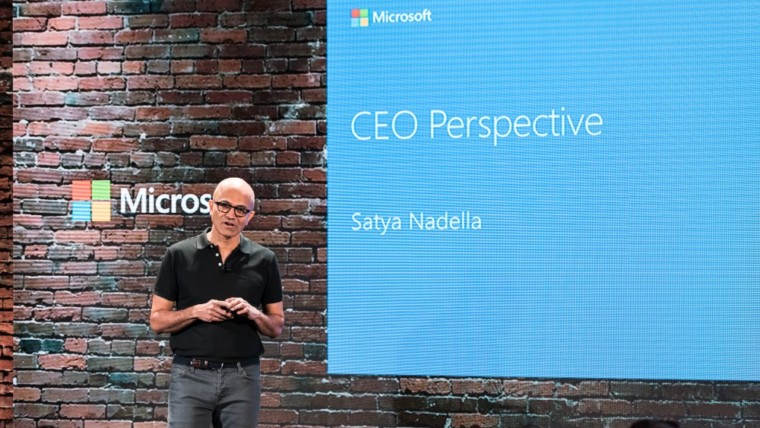Amazon, the world’s most valuable company, has grown their share price by over 1000% since they went public in 1997 by cornering the market for nearly all of our needs and wants. Today, Amazon employs more than 750,000 employees across multiple divisions—all of which could be valuable public companies in their own right. Amazon’s rise has naturally piqued collective curiosity into how the business runs itself.
In this article, we’ll explore Amazon’s semi-annual budgeting and planning process, dubbed OP-1 and OP-2 (OP stands for Operating Plan). Amazon’s process allows a very large organization to strategically divide its resources while still maintaining autonomy and flexibility across its divisions and their teams. When done well, teams feel a sense of ownership and control over their goals, while also the freedom to adapt when early uncertainties produce unintended consequences and outcomes.
What Makes Amazon’s Culture Unique
Before we detail Amazon’s budgeting process, it’s important to understand Amazon’s culture, and how that plays a role in all of their processes.
- Customer-obsessed. This isn’t just a marketing slogan—one Product Manager we spoke with told us there’s literally nothing more damaging to your reputation at the company than being labeled “customer un-obsessed.”
- Outcome-, not output-, focused. An output is the result of an activity (e.g., three new features launched) rather than the result of those outputs (e.g., checkout takes 20% less time for customers). Teams are therefore encouraged to try lots of different outputs to uncover which is most effective in reaching their desired outcomes. This also reduces the natural urge of leadership to micromanage teams and dictate their outputs.
- Hyper-rational. Former Amazon employee Samir Lakhani noted, “At Amazon, people make decisions using data. While this seems obvious and commonplace in the tech industry, at Amazon it is taken to the extreme where even small decisions or things that are seemingly not quantifiable are measured and evaluated. Everything is subject to this, from hiring decisions (‘Is the candidate better than 50% of employees at the same role?’) to design (‘What proportion of customers in a usability test stumbled in the treatment?’). The positive side of this is that data can be used as a tool for reversing any decision, no matter the seniority of the decision maker.”
- Decentralized. There’s no Chief Product Officer at Amazon and no product divisions, either. This means that plans are hatched and shared by a dispersed group of product managers across the organization who have to work together, rather than a top-down mandate.
- Concise. Yes, there is an explicit six-page rule at Amazon, and when plans are shared they must fit on those six pages––and when plans are combined across multiple teams, they are still expected to fit on just six pages. Even after every team’s plans have been collated across the entire organization, Bezos only wants to see a six-page document.
- Consistent. Lastly, Amazon reinforces these ways of working and cultural values by constantly reinforcing their 14 leadership principles. A product manager we spoke with said that some teams review one leadership principle per month, and everyone is expected to attend and discuss how to apply the principle in their work—even if you’ve been with the company for a decade or more.
Amazon’s Planning Process
The Amazon planning process is divided into a bi-annual process dubbed OP-1 (Operating Plan) and OP-2.
OP-1, which happens around June, is a mandatory six-page document produced by every team’s Product Manager, addressing the following questions:
- What outcomes did you achieve last year, in comparison to what you planned?
- What outcomes can you achieve if your level of investment remains the same?
- What resources do you need to grow your business by 10x?
Responses to OP1 can result in either a full investment of your team, or its disbanding. As the world’s most valuable company, Amazon is primarily interested in leading any category it chooses to compete in—if your team doesn’t have a viable path to market dominance, the company may surrender the market for now.

Reinvent Your Planning Process
If you’re interested in a new approach to strategic planning, explore NOBL’s Adaptive Planning model and consulting services.
After nearly a month of preparation and socializing between other teams, each team submits their plan. Leaders then collate those plans at every organizational layer so that when Jeff Bezos sits down to review the full company’s goals and resources, he’s staring at only six pages. Bezos makes key decisions, and then the process cascades back down in determining which teams receive what resources.
OP-2, which happens around the end of December, is another six-page document from every team which asks:
- What did you accomplish since OP-1 compared to what you planned?
- Reasonably, how will you finish out this year and first quarter of next year?
If OP-1, with its questions about how to 10x your business, is about blue-sky thinking, OP-2 is about closing the year realistically and managing expectations. OP-2 also reflects what’s already happened during the team’s most active period, Black Friday and holiday shopping.
Decentralized Teams and Cross-Functional Goals
As mentioned, Amazon is a very decentralized company, and one drawback of decentralized teams could be the emphasis of divisional goals over enterprise-wide needs. (Let’s be honest: workers tend to prioritize goals they have more influence over and that their direct boss is paying attention to.) Despite the fact that Amazon is a very distributed company, executives actively identify cross-functional and customer-sensitive projects and priorities as they review goals. Goals which are considered cross-functional, and which require cross-team collaboration, are designated “S-2 Goals,” and like customer-centricity, no Product Manager wants to be called out for working against S-2 Goals. This designation, and its social pressure, ensures that divisional goals don’t supersede far more important cross-divisional goals.
Bend It Like Bezos
Your company is probably nothing like Amazon (who else really is?), so we don’t advise that you try to copy/paste their entire OP1 and OP2 process. However, we do think that there are aspects of their process and philosophy you can experiment with in your own planning cycles.
- Dream big. Amazon asks their teams to brainstorm what would 10x their business–and they expect audacious ideas in return. Doing a form of this in your organization could energize teams around a challenge while also avoiding the inertia that results in teams doing the same thing year after year with diminishing returns.
- Be concise. For those involved, yearly planning often feels like death by a thousand Powerpoint slides. Creating an artificial limit like Amazon’s six-pages, or just a concise template, could reduce information fatigue and unnecessary work.
- Plan toward outcomes, not outputs. Give your teams ambitious and inspiring outcomes to achieve (e.g. “Become our customers’ first choice”) rather than dictating how they work and what they produce. This should have two benefits: 1) Deeper engagement, and 2) Greater freedom for your teams to try new and unique approaches (including ways you may have never expected).
- Involve a diversity of folks in the process. At far too many companies, yearly planning is a closed door process involving only the most senior executives. As a result, a lot of necessary information and useful creativity are therefore restricted from participating. This is so often why leaders roll out goals that are unrealistic and lack a unified vision for how the work will get done. Amazon starts their process from the bottom, but you could also create cross-functional and cross-hierarchical teams to produce the first drafts of your yearly goals and plans.
- Be more rational. When you’re making decisions about the year’s goals and plans, question how those decisions are being made. Don’t let seniority, persuasive ability, or familiarity trump logic and observable data.
- Lastly, don’t ignore leadership habits. You can’t expect to achieve new outcomes with the same behaviors. If you’re trying to make a strategic shift in your business, you’ll likely require new behaviors and mindsets from your people, starting with your leaders. Do define those shifts as part of the planning process.
Learn more about Adaptive Planning, NOBL’s approach to strategic planning.








The Evolutionary Edge
Every Link Ever from Our Newsletter
Why Self-Organizing is So Hard
Welcome to the Era of the Empowered Employee
The Power of “What If?” and “Why Not?”
An Adaptive Approach to the Strategic Planning Process
Why Culture/Market Fit Is More Important than Product/Market Fit
Group Decision Making Model: How to Make Better Decisions as a Team